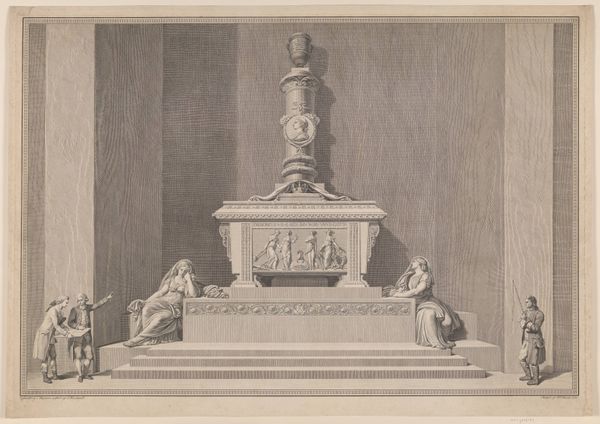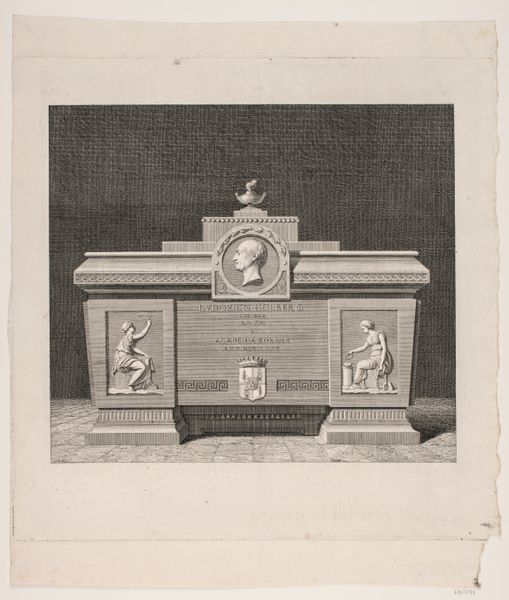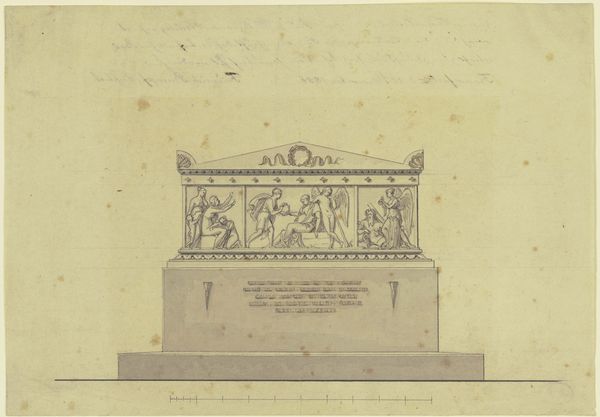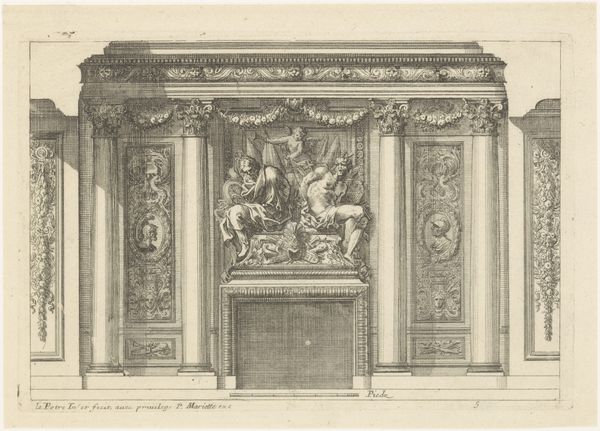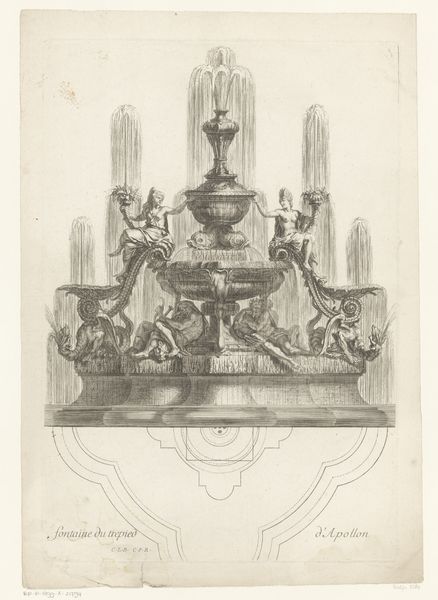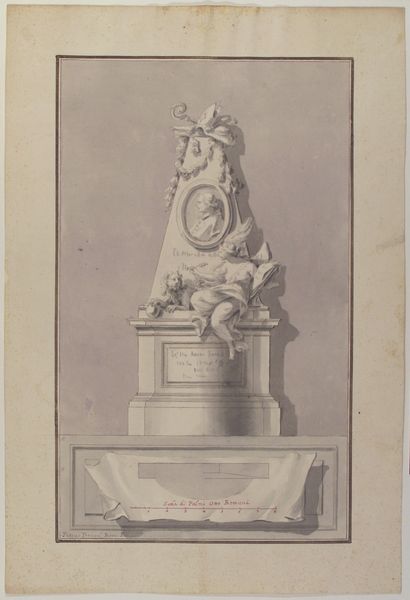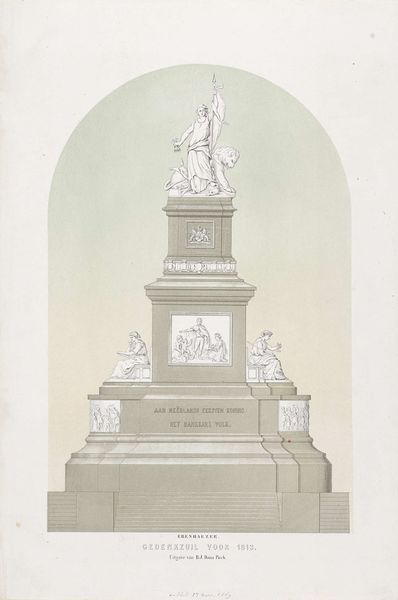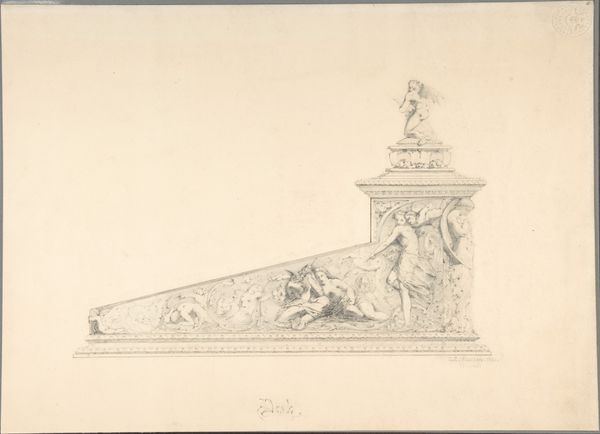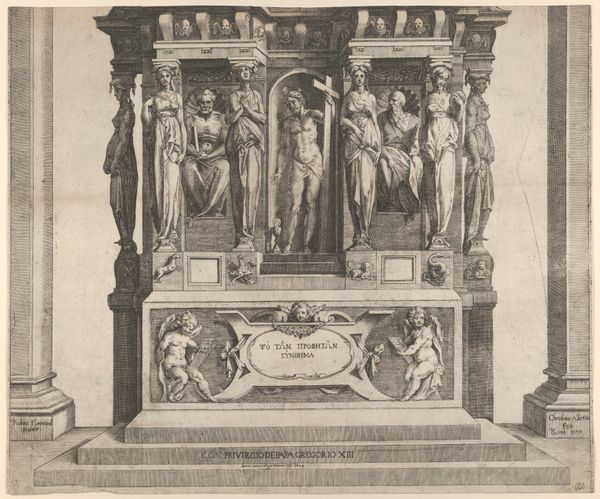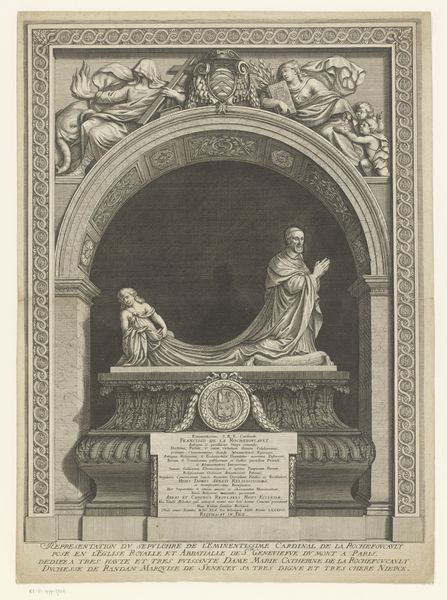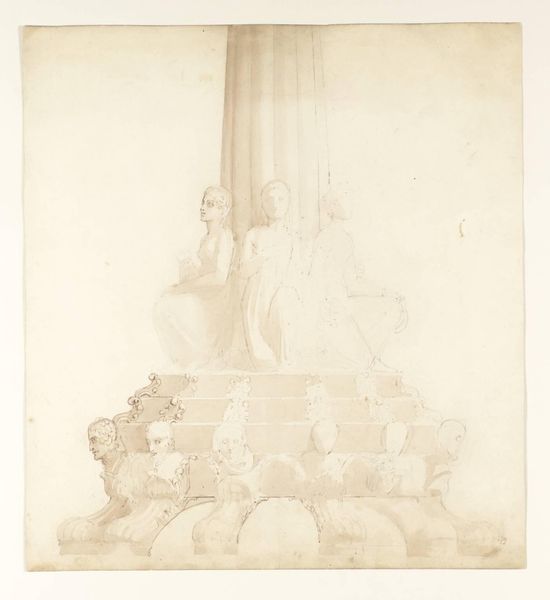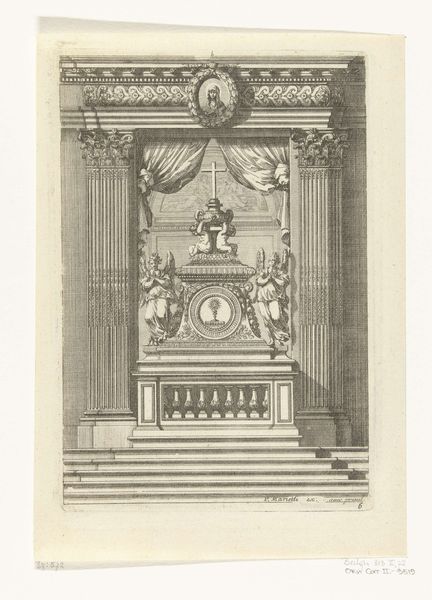
print, engraving, architecture
#
neoclacissism
# print
#
form
#
line
#
history-painting
#
engraving
#
architecture
Dimensions: 546 mm (height) x 778 mm (width) (plademaal)
Curator: My initial reaction is that it's strikingly austere, almost cold in its formality. Editor: This engraving, titled "Frederik V's gravmonument i Roskilde Domkirke," created around 1783 by J.F. Clemens, presents a fascinating study in neoclassical aesthetics, but it also carries the weight of its historical context. Curator: The very precision of the engraving, that meticulous line work, gives it a quality akin to architectural blueprints. One becomes conscious of the design and labor involved. Editor: Exactly! And situating this monument within the Domkirke, it served not only as a final resting place but also a powerful assertion of royal authority in a time of political and social shifts. We must consider the power dynamics at play: Who was this monument really *for*? Was it for Frederik V or to remind others of Frederik V's lineage and importance? Curator: It's crafted through precise engraving techniques. Look at how Clemens translates monumental scale onto a relatively small print. You can practically feel the stone, and that is through craftsmanship and control. The figures around the mausoleum feel as if they are stone themselves. Editor: It's crucial to analyze the figures positioned around the monument. They're not merely decorative; they represent particular ideas linked to grief and remembrance, acting almost as performative mourners frozen for posterity. Curator: Yet they seem incredibly static. They appear fixed to the location by form, which does little to engage with emotive representation. Editor: Isn't that tension indicative of the Neoclassical period, where a very performative emotionality was restrained and expressed according to very strict class and gender conventions? The monument attempts to dictate feelings and behavior as much as to inspire mourning. Curator: So you're thinking about what happens when form dictates content in the socio-political structure? An interesting question to ponder in relation to its material. Editor: Precisely. Considering the history painting's socio-political climate surrounding its consumption opens further interpretation possibilities, beyond only considering purely visual qualities. It all ties back into an interplay of identity and authority. Curator: Well, I will definitely ruminate over that framework from which we see the piece. Editor: The intersections we have considered are always present when looking at historical artwork through our modern understanding, and I have no doubt new interpretations are yet to come.
Comments
No comments
Be the first to comment and join the conversation on the ultimate creative platform.
